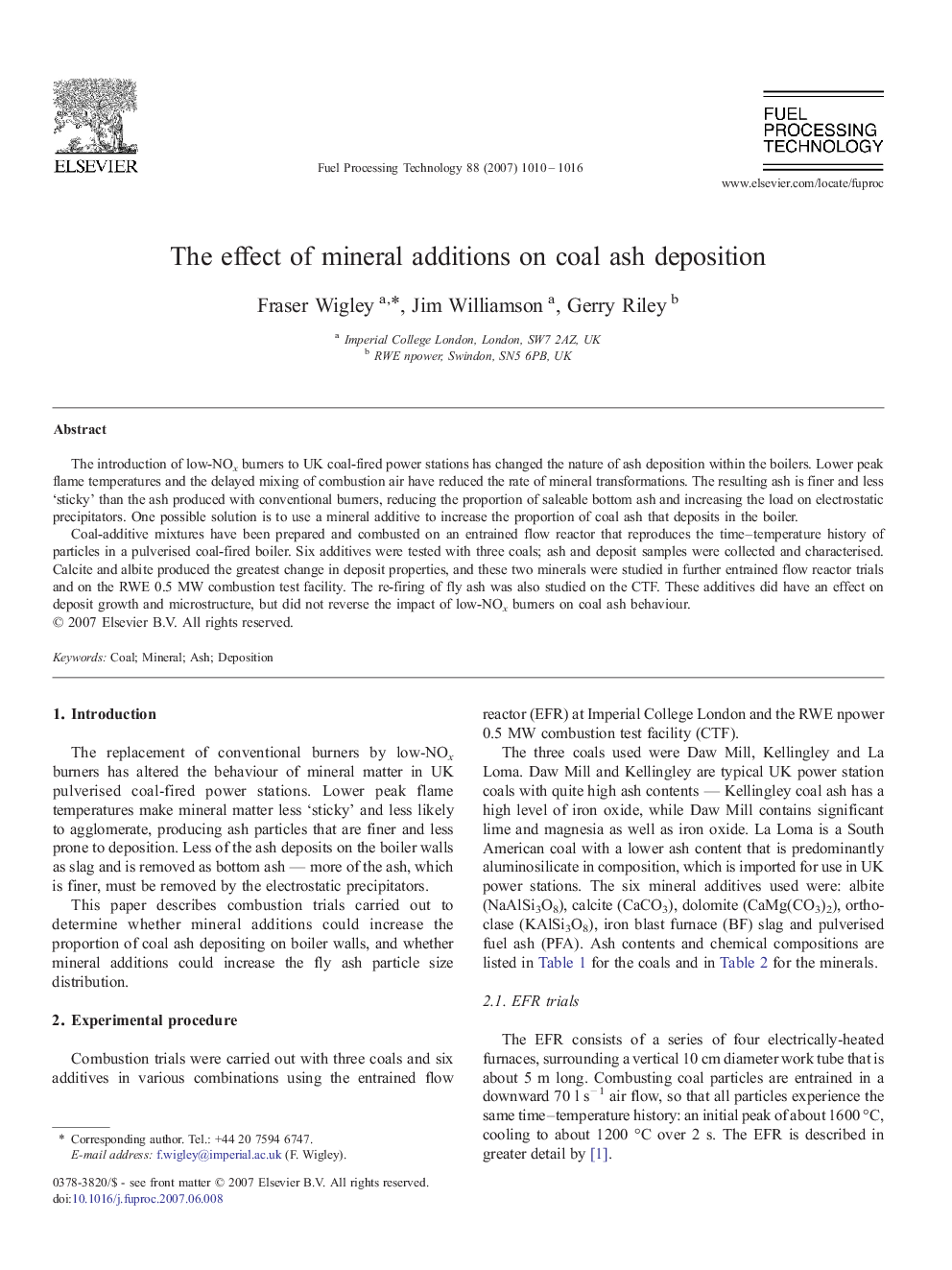| Article ID | Journal | Published Year | Pages | File Type |
|---|---|---|---|---|
| 211252 | Fuel Processing Technology | 2007 | 7 Pages |
The introduction of low-NOx burners to UK coal-fired power stations has changed the nature of ash deposition within the boilers. Lower peak flame temperatures and the delayed mixing of combustion air have reduced the rate of mineral transformations. The resulting ash is finer and less ‘sticky’ than the ash produced with conventional burners, reducing the proportion of saleable bottom ash and increasing the load on electrostatic precipitators. One possible solution is to use a mineral additive to increase the proportion of coal ash that deposits in the boiler.Coal-additive mixtures have been prepared and combusted on an entrained flow reactor that reproduces the time–temperature history of particles in a pulverised coal-fired boiler. Six additives were tested with three coals; ash and deposit samples were collected and characterised. Calcite and albite produced the greatest change in deposit properties, and these two minerals were studied in further entrained flow reactor trials and on the RWE 0.5 MW combustion test facility. The re-firing of fly ash was also studied on the CTF. These additives did have an effect on deposit growth and microstructure, but did not reverse the impact of low-NOx burners on coal ash behaviour.
